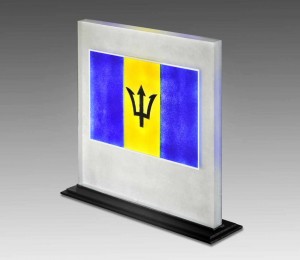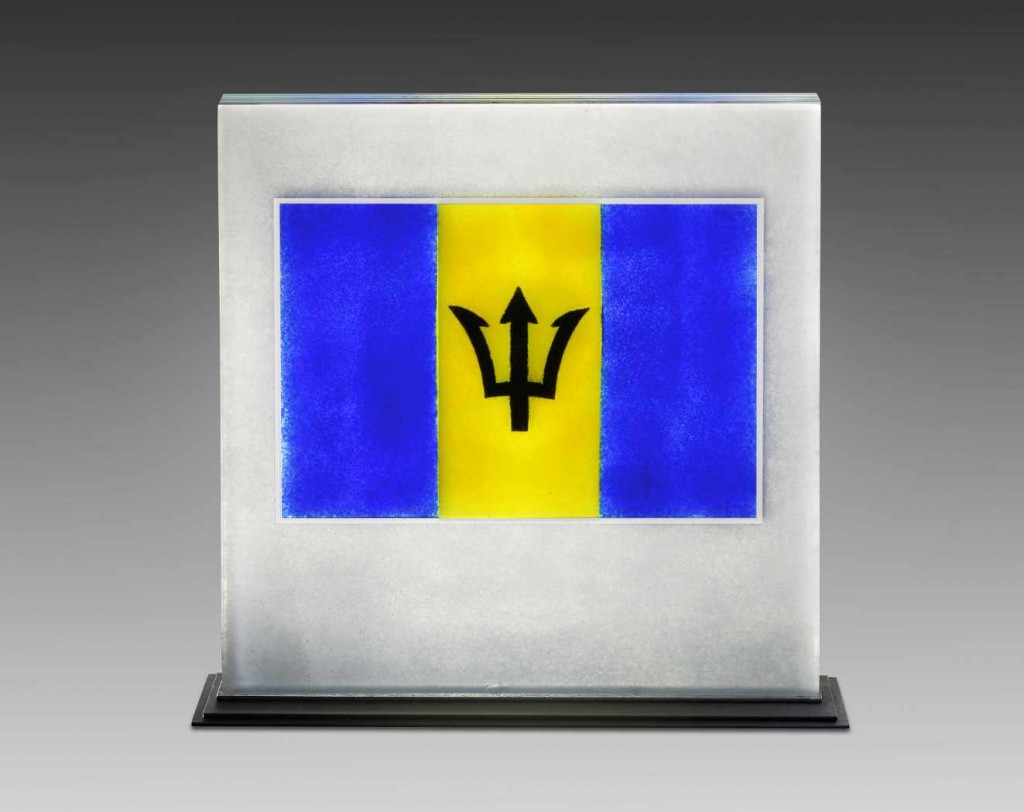 Returnthe 2012 summary
Returnthe 2012 summary
 Work available
Work available
Barbados
2012
50 x 50 x 3.6 cm. 28 kg - glass merged in multilayer with inclusion of pigments
![]()
Archaeological remains show that the island was inhabited by the Arawak Indians who populated the Caribbean, driven by the Karibes Indians, originating from the North of Venezuela and so-called cannibals.
In 1625, the arrival of the first settlers English, there is apparently more trace of these Arawaks Indians. From 1640, small farms are replaced by larger properties. The white population of Europe appealed to the slaves from Africa. The Decree of 1636 on slavery in life taken in Barbados is the first written record of legalization of slavery in the British empire. Emancipation was obtained in 1838.
Adopted in 1966, on the occasion of the independence of the island, after three centuries of domination, the flag of Barbados evokes the insular character of this state of the West Indies: the yellow band represents the golden sand of the beaches, and the two bands of deep blue's share and other symbolize the sea and the sky.
Click on the images to zoom
The end of the trident of Neptune, which was included in its entirety on the colonial arms of the island, refers to breaking the bonds of subjection with Great Britain but also the dependence of the people to the products of the sea.
Official name: Barbados
Continent: America | Capital: Bridgetown
Area: 430 km2. Population (2008): 281 970 inhabitants
Official language: English | Currency: the Barbados dollar
Border countries: None
National holiday: 30 November | Motto: Pride and work
Member of the United Nations: 9 December 1966
Member of the UNESCO: October 24, 1968


